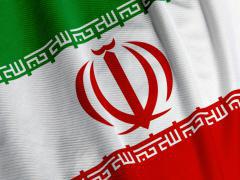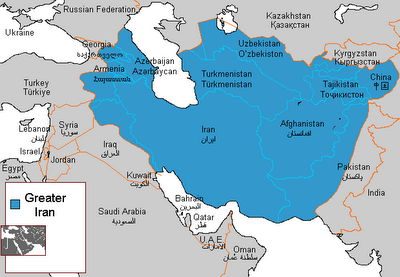 Last Monday, the foreign ministers of Iran, Oman, Qatar, Turkmenistan and Uzbekistan signed in the Turkmen capital, Ashgabat, an agreement on the establishment of a Central Asia-Persian Gulf transit and transport corridor. As explained by Uzbek Foreign Minister Elyor Ganiyev, the route will be created from existing railroads running from Uzbekistan through Turkmenistan and further south to seaports in Iran.
Last Monday, the foreign ministers of Iran, Oman, Qatar, Turkmenistan and Uzbekistan signed in the Turkmen capital, Ashgabat, an agreement on the establishment of a Central Asia-Persian Gulf transit and transport corridor. As explained by Uzbek Foreign Minister Elyor Ganiyev, the route will be created from existing railroads running from Uzbekistan through Turkmenistan and further south to seaports in Iran.
“I’m sure this agreement will have favourable and constructive results for regional nations, and will offer the five nations useful and ideal opportunities in launching international transit services,” Iran’s Foreign Minister Ali-Akbar Salehi said. The top Iranian official also stressed that Central Asian countries, especially Turkmenistan and Uzbekistan, have played a key role in the economic development of the regional nations, stating that “these countries are among major producers of minerals as well as oil and gas in the region and the world, which makes their transit status and significance all the more important.”
As the planned route would substantially ease trade exchanges between Persian Gulf nations and Central Asia, as well as China and Russia further north, Salehi expressed hope that more countries would join the North-South transit corridor once it becomes operational. Iran, in particular, hopes to use the route to export up to 10 million tons of oil products annually to Central Asia. In a press conference upon his arrival in Ashgabat, where he was officially welcomed by his Turkmen counterpart Rashid Meredov, Salehi said that the Islamic Republic is also cooperating with Turkmenistan and Kazakhstan to build a railroad linking the three countries that, apart from boosting the trade transactions among the three sides, is expected to strengthen ties in political, economic and cultural spheres.
Like the United States, Russia and China, Iran is one of the key players in Central Asia. Teheran’s contacts in the region are particularly close with Tajikistan, the only Persian-speaking state on the territory of the erstwhile Soviet Union. These days, Iran is the largest investor in the country after China. Both Teheran and Dushanbe share a common dram: to establish a Farsi-speaking alliance extended to Afghanistan. Like with Tajikistan, in fact, Iran and Afghanistan share commonalty of language, cultures, ways, and traditions. The collapse of the Soviet Union first, and the declining influence of the United States in Central Asia, have actually increased Teheran’s influence in the region, although China’s increasing power is rapidly occupying the spaces left by its two strategic competitors, threatening as well Teheran’s geopolitical ambitions.
Nevertheless, with China relying on Iran for 12-14% of its oil imports and the Middle East under US geo-strategic control, Beijing may actually allow Teheran to establish itself as a major power in the Caspian Sea basin. During the last years, Iran has been keen to foster links with Turkmenistan, Kazakhstan, and Uzbekistan to facilitate oil-swap deals that have seen the three Central Asian states ship their crude to Neka on the Caspian Sea, with Teheran in turn delivering equivalent volumes of oil to their clients through its Kharq terminal in the Persian Gulf.
Insofar as initiatives like the Central Asia-Persian Gulf transit and transport corridor go forward, China may also be interested in using Iran as an export route. In this way, Iran may become not only a geopolitical bridge between the two world’s richest oil and gas regions – the Middle East and Central Asia – but also an important artery for trade between China and Africa, whose expansion is one of the keystone of China’s transformation into a global superpower. The basis for the restoration of Iranian influence in the area between the Persian Gulf and the Aral Sea are set.
IRAN'S GEO-CULTURAL SPHERE OF INFLUENCE


